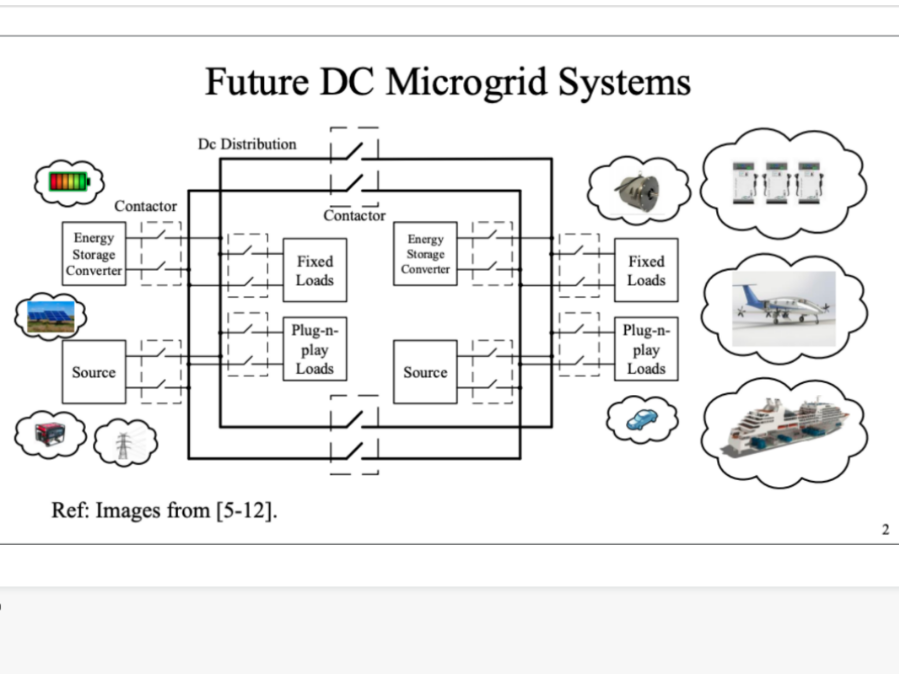Active Stability Monitoring and Regulation
A microgrid is a localized energy grid capable of operating autonomously while connected or disconnected from the traditional grid. Direct-current (DC) microgrids comprise several interconnected power electronic converters sharing a DC link. Due to the continued electrification of transportation and integration of renewable energy, the DC microgrids of the future are expected to be much more dynamic than they have been in the past. For example, they are expected to incorporate different kinds of sources, such as renewable energy and fuel-based generators.
Problem
Stable operation of future microgrids will be challenged by the negative incremental resistance behavior of the constant power loads as well as interactions among different, interconnected converters, creating a need to monitor stability to prevent system failures. Unfortunately, approaches that utilize information from all interconnected converters are slow and expensive. Although some methods exist for periodically measuring system stability, currently there are none that give a continuous measure of system stability. Additionally, systems with cost, weight, or volume constraints may require a means of not only monitoring stability but regulating it. Lack of an ability to monitor stability obviously engenders difficulty in regulating it.
Solution
The technology monitors the system stability of a microgrid through one of the converters already in place in the system while avoiding use of additional system hardware. It is accomplished through analyzing the system minor loop gain, which has a magnitude equal to 1 at the system crossover frequency. At this frequency, the phase of the minor loop gain gives information about the stability margin, or phase margin, of the entire DC microgrid. USU researchers have also developed an apparatus that can commensurately regulate stability by emulating a dynamic virtual impedance.
Benefits
The technology allows users to avoid system overdesign, reduces additional hardware requirements, reduces overall system cost and volume, and helps ensure system stability and reliability. The technology enables the development of new techniques in adaptive stability enhancement of DC microgrids.
Applications
This technology can be used in any interconnected system to actively monitor and regulate system stability in real time. The stability monitor and regulator can be incorporated into any power electronic converter topology in a DC microgrid with the ability to sense the DC-terminal voltage and output current, in a controller with a bandwidth capable of including the DC link voltage and current, or in a health-monitoring system that measures the system minor loop gain crossover frequency.

Contact
Questions about this technology including licensing availability can be directed to:
Alan Edwards, MA, JD
Manager, Technology Transfer Services
(435) 797-2328 alan.edwards@usu.edu
Inteum ID C20025
Inventors
Rohail Hassan, M.S.
Electrical and Computer Engineering
Hongjie Wang, Ph.D.
Electrical and Computer Engineering
Regan Zane, Ph.D.
Electrical and Computer Engineering
Development Stage
TRL 2
Patent Status
Patent Pending
Publications
Continuous Stability Monitoring of DC Microgrids Using Controlled Injection, Applied Power Electronics Conference and Exposition (APEC), 2019 Annual IEEE Conference

